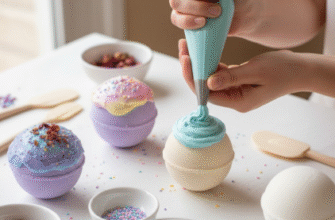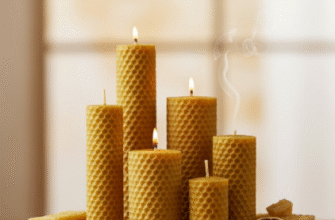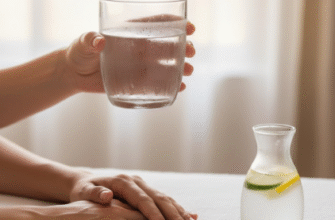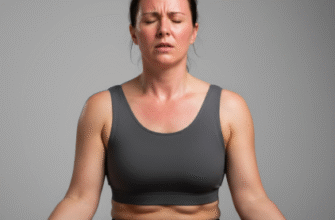Walking into a home that feels genuinely clean is one of life’s simple pleasures. But often, that “clean” smell from store-bought floor cleaners comes courtesy of harsh chemicals with long, unpronounceable names. If you have little ones crawling around, pets who lick dropped snacks (or just the floor itself!), or simply prefer a healthier environment, the thought of those residues lingering can be unsettling. The good news is, achieving sparkling, fresh-smelling floors doesn’t require a hazmat suit or a hefty price tag. Nature provides powerful, effective, and safe ingredients you can easily mix yourself.
Making the switch to a homemade natural floor cleaner offers a surprising number of benefits. Firstly, peace of mind is paramount. You know exactly what’s going onto your floors – no mystery fragrances, dyes, or aggressive surfactants that could irritate skin, trigger allergies, or harm curious pets. Secondly, it’s incredibly cost-effective. Basic ingredients like vinegar and water are far cheaper than specialised commercial cleaners. Thirdly, you’re doing the planet a favour by reducing plastic waste (reuse your spray bottle!) and preventing harsh chemicals from entering waterways. It’s a win-win-win situation: safer home, lighter wallet, happier Earth.
The Power Players: Understanding Natural Cleaning Ingredients
You don’t need a chemistry degree to whip up an effective floor cleaner. Most recipes revolve around a few key, readily available ingredients:
Distilled White Vinegar: This is the undisputed champion of natural cleaning. Its acidity (acetic acid) makes it brilliant at cutting through grease, dissolving mineral deposits (like hard water stains), and neutralising odours. It also has mild disinfectant properties. Don’t worry about the smell – it dissipates quickly as it dries, leaving behind just freshness.
Water: The universal solvent! Preferably use distilled or filtered water, especially if you have hard tap water. This prevents minerals in tap water from leaving streaks or residue on your floors.
Essential Oils: These are not just for fragrance, although they excel at that! Many essential oils possess antibacterial, antifungal, or antiviral properties, adding an extra cleaning boost. Popular choices include tea tree, lemon, orange, peppermint, lavender, and eucalyptus. Choose scents you love and enjoy the aromatherapy benefits while you clean.
Rubbing Alcohol or Vodka: Adding a splash of alcohol can help the cleaner evaporate faster, reducing streaks, especially on shiny surfaces like laminate or tile. It also adds some disinfecting power.
Liquid Castile Soap (Use Sparingly & With Caution): Derived from vegetable oils, pure castile soap (like Dr. Bronner’s) can add extra cleaning power for very dirty floors. However, use it sparingly (a few drops per gallon of water) as too much can leave a residue. It’s generally better suited for non-porous surfaces and should be avoided or used with extreme caution on waxed wood floors, as it can strip wax.
My Go-To All-Purpose Natural Floor Cleaner Recipe
This basic recipe is a great starting point and works well for many sealed floor types, particularly tile, vinyl, and linoleum. Remember to always spot test first!
You will need:
- A clean spray bottle or mop bucket
- 1 part Distilled White Vinegar
- 3 parts Warm Distilled or Filtered Water
- 5-15 drops of Essential Oil(s) of your choice (optional, for scent and extra cleaning power)
- 1-2 teaspoons Rubbing Alcohol (optional, for faster drying/streak prevention)
Instructions:
- Combine the water and vinegar in your spray bottle or bucket. If using warm water, it can help dissolve any minor grime more easily.
- If using, add the rubbing alcohol.
- Add your chosen essential oils. Start with fewer drops and add more if desired. Swirl gently to combine.
- Secure the lid on the spray bottle or get your mop ready for the bucket method.
How to Use:
For the spray bottle method: Lightly spritz a section of the floor and wipe immediately with a damp microfiber mop or cloth. Avoid soaking the floor. Work in manageable sections.
For the bucket method: Dip your mop into the solution, wring it out thoroughly until it’s just damp (not dripping wet), and mop the floor. Again, avoid oversaturating the floor, especially wood or laminate. Change the cleaning solution if it becomes visibly dirty.
Adapting Your Cleaner for Different Floor Types
Not all floors are created equal! Using the wrong cleaner can cause damage. Here’s how to tweak the basic recipe:
Sealed Hardwood & Bamboo Floors
Wood requires extra care. Vinegar is acidic and, used too strongly or too often, could potentially dull the finish over time. Water is wood’s enemy, so minimal moisture is key.
- Dramatically reduce the vinegar: Use only 1/4 cup of vinegar per GALLON of warm water. Some experts even recommend skipping vinegar altogether for wood and just using water with a few drops of essential oil, or a pH-neutral cleaner specifically designed for wood.
- Emphasize minimal water: Use the spray method or a very well-wrung-out mop. Never let water pool on the surface.
- Consider Castile Soap (with caution): A tiny amount (1-2 drops per gallon) *might* be acceptable for deep cleaning very dirty sealed wood, but always spot test. Avoid entirely on oiled or waxed finishes.
- Focus on damp mopping: A slightly damp microfiber mop is your best friend here.
- Dry immediately: If any moisture remains, wipe it up with a dry cloth.
Laminate Flooring
Laminate hates excess moisture, which can seep into the seams and cause swelling or buckling. Streakiness can also be an issue.
- Vinegar ratio: Stick to the 1 part vinegar to 3 parts water ratio, or slightly less vinegar if you prefer.
- Add Rubbing Alcohol: Definitely include the rubbing alcohol (about 1/4 cup per spray bottle, or 1/2 cup per gallon in a bucket) to help with fast evaporation and streak prevention.
- Minimal moisture is crucial: Use a spray mop or a very well-wrung mop. Never flood the floor.
- Mop direction: Mop in the direction the laminate planks are laid to minimize streaks.
Tile (Ceramic, Porcelain) & Vinyl Floors
These surfaces are generally more resilient and can handle the standard recipe well.
- Standard Recipe: The 1 part vinegar to 3 parts water recipe usually works perfectly.
- Grout Cleaning: For dirty grout, you might need something stronger occasionally (like a paste of baking soda and water, scrubbed with a brush), but the vinegar solution helps with regular maintenance.
- Castile Soap Option: For heavily soiled tile or vinyl, you can add a few drops of castile soap to the mix for extra degreasing power. Rinse with plain water afterward if you use soap, to prevent residue buildup.
Natural Stone (Marble, Granite, Travertine)
STOP! Do NOT use vinegar or lemon juice (or any acidic cleaner) on natural stone. The acid will etch and damage the surface over time. For these floors, stick to pH-neutral cleaners specifically designed for stone, or simply use warm water and a microfiber mop. A tiny drop of pH-neutral dish soap (like Dawn original) in a gallon of water can be used for greasy spots, but rinse well.
Always Spot Test First! Before applying any homemade cleaner to your entire floor, test it in a hidden area, like inside a closet or under a large piece of furniture. Apply the cleaner, let it dry completely, and check for any discoloration, dulling, or adverse effects. This simple precaution protects your flooring investment and ensures compatibility. Different finishes and sealants can react unexpectedly.
Choosing Essential Oils for Scent and Power
Beyond just making your cleaner smell nice, essential oils contribute functional benefits:
- Lemon or Orange: Excellent degreasers, bright and uplifting scent.
- Tea Tree: Powerful antibacterial and antifungal properties; medicinal scent.
- Peppermint: Fresh, invigorating scent; may help deter pests like ants or spiders.
- Lavender: Calming, pleasant floral scent with some antibacterial properties.
- Eucalyptus: Strong, clean scent; good disinfectant qualities.
- Pine or Fir: Classic “clean” forest scent; good deodorizers.
Feel free to mix and match oils to create your signature scent! Start with a total of 10-15 drops per batch and adjust based on your preference.
Tips for Success
- Sweep or Vacuum First: Always remove loose dirt, dust, and debris before mopping. Mopping a dirty floor just pushes the grit around and can scratch the surface.
- Use Microfiber Mops/Cloths: Microfiber is excellent at grabbing dirt and requires less water and cleaner than traditional cotton mops.
- Wring Thoroughly: Remember, damp is good, wet is bad (especially for wood and laminate).
- Change Water/Solution When Dirty: Don’t clean your floors with dirty water! Refresh your bucket solution as needed.
- Work in Sections: This prevents the cleaner from drying before you can wipe it up, reducing streaks.
- Air Dry or Buff Dry: Allow the floor to air dry, or buff with a clean, dry microfiber cloth for extra shine, especially on glossy surfaces.
Switching to a homemade natural floor cleaner is an easy, empowering step towards a healthier home. It requires minimal effort, saves money, and gives you complete control over the ingredients your family and pets are exposed to. Enjoy the process, experiment with scents, and take pride in your sparkling, naturally fresh floors!








